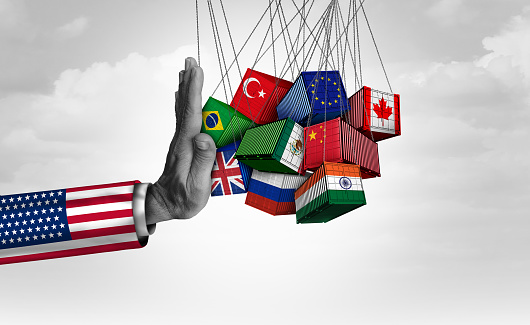During the last five years the global economy has been going through a series of shocks. Events like once-in-a-century kind of pandemic, high levels of inflation, wars in many parts of the world including Europe, geopolitical tensions particularly in West Asia, terror strikes leading to conflicts between nuclear powers like India and Pakistan and unprecedented hikes in tariffs impacting global trade, were all compressed in a short period of five years. After this series of shocks, the global economy appears to have stabilized but growth has declined to low levels. The IMF has lowered global growth to 2.8 percent in 2025. See the table below:
World Economic Outlook: IMF
| Country/Region | 2024 | 2025 (P) | 2026 (P) |
| World Output | 3.3 | 2.8 | 3.0 |
| Advanced Economies | 1.8 | 1.4 | 1.5 |
| United States | 2.8 | 1.8 | 1.7 |
| Euro Area | 0.9 | 0.8 | 1.2 |
| Germany | -0.2 | 0 | 0.9 |
| France | 1.1 | 0.6 | 1.0 |
| Italy | 0.7 | 0.4 | 0.8 |
| Japan | 0.1 | 1.1 | 1.4 |
| United Kingdom | 1.1 | 1.1 | 1.4 |
| China | 5.0 | 4.0 | 4.0 |
| India | 6.5 | 6.2 | 6.3 |
| Russia | 4.1 | 1.5 | 0.9 |
| Brazil | 3.4 | 2.0 | 2.0 |
| South Africa | 0.6 | 1.0 | 1.3 |
IMF has projected global growth at 2.8 percent for 2025, down from 3.3 percent last year. India continues to be the fastest growing large economy in the world.
Trump’s tariffs impacting global trade and growth
A recent report by UNCTAD (United Nations Conference on Trade and Development) warns of Trump tariffs impacting global trade and growth. The unprecedented tariff changes declared by President Trump have disrupted international trade like never before. Tariffs imposed by the US triggered counter tariffs by other countries and regions. This has triggered unprecedented uncertainty impacting business decision making. An atmosphere of predictability and trust is needed for facilitating investment and growth. This positive atmosphere has been disturbed by Trump’s tariffs. Many CEOs are in a wait and watch mode for clarity to emerge. Economists fear that Trump’s tariffs are likely to have a cascading effect ultimately ending up in slowing global economic growth. Developing economies in Southeast Asia are likely to be the worst affected by this trade disruption. The US is also likely to be impacted by the tariffs and trade disruptions. Moody’s has raised the probability of the US falling into recession in the next twelve months to 47.6 percent. Many countries have negotiated trade deals with the US before the August 1st deadline; many haven’t. It remains to be seen how this tariff-induced trade disruption pans out.
India has been negotiating with the US on the nuances of an interim trade deal between the two countries. The near consensus view is that an interim trade deal will be reached between the two countries, soon. If the tariff rate to be imposed on India is significantly lower than 20 percent, that would be advantage for India.
With uncertainty regarding tariffs and trade looming large economic growth will remain subdued in 2025. Recovery is expected in 2026. Despite the many challenges India will continue to be the fastest growing large economy in the world.







